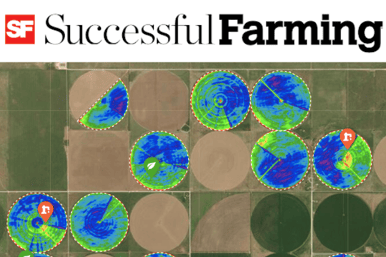There's no shortage of technology available to today's growers. For many, the biggest challenge may be deciding which of the fast-evolving options is truly worth the investment—including the time it takes to master the implementation.
Kansas-based grower Ryan Speer discussed his operation's journey with aerial imagery and analytics with Successful Farming.

Several years ago, Ryan Speer reviewed aerial imagery showing a peculiar 15-foot circular swath that perfectly matched the course of the field’s center pivot.
“I wondered what in the world that was,” says Speer, an owner of Jacob Farms and Cattle, Sedgwick, Kansas. “I knew it had something to do with the pivot, because it was a perfect circle.”
Actually, the explanation was simple. A misplaced adjustment rod on the pivot’s end gun keyed the skip. “It was a small enough adjustment that I couldn’t visually see, but the imagery picked it up,” he says.
To learn more and read the full article, visit Successful Farming.

